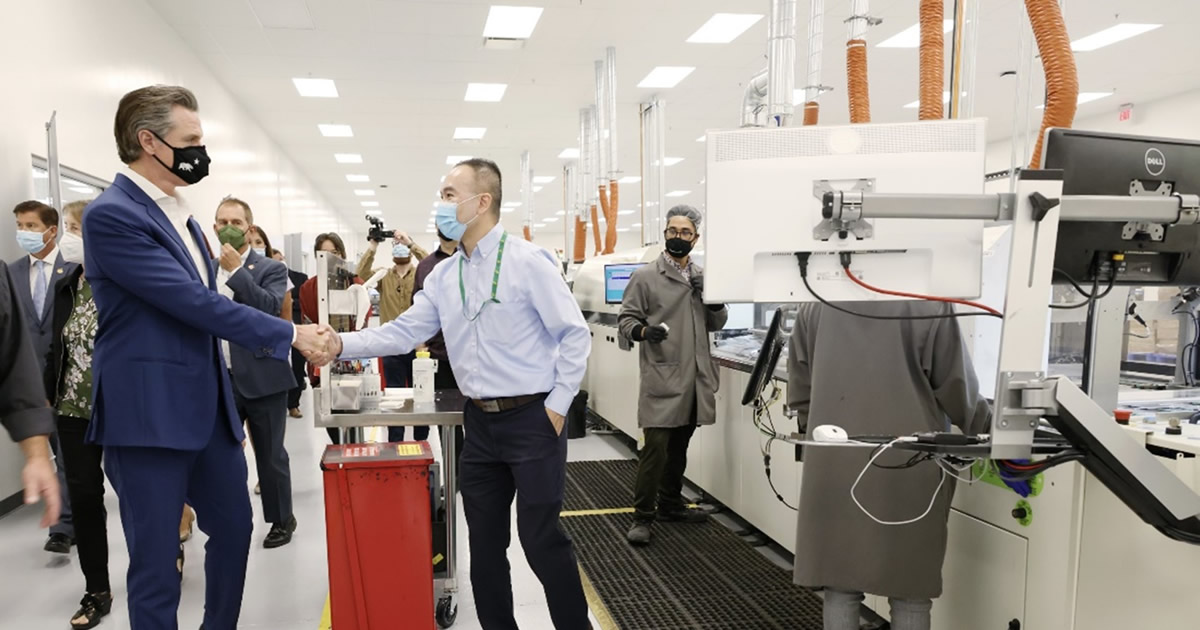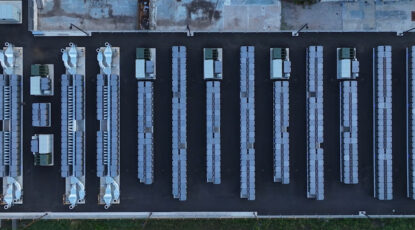Manufacturing in the United States is seeing robust growth in recent years, and the clean energy sector is poised to dominate this trend.
With the opening of a state-of-the-art 164,000 square foot multi-gigawatt factory in Fremont and a boost in output at its Delaware facility, Bloom Energy is at the forefront of adding up to 400 local, clean technology manufacturing jobs to its manufacturing base in 2022. Moreover, when the IRA was announced in August, it included key provisions such as the hydrogen production tax credit and tax credits for producing microgrid equipment that make producing and adopting these technologies more economical.
“Together with partners like Bloom Energy, California is powering the future while creating thousands of new jobs in manufacturing and clean energy,” California Governor Gavin Newsom said of Bloom during a ribbon-cutting event at the new Fremont factory. “Our state’s reliable energy future depends on the hard work and innovation of California-bred companies.”
The manufacturing of goods that power industries is critical to the U.S.—in fact, an entire week is dedicated to celebrating the skilled laborers each autumn. And with good reason. Manufacturing employs over 12.5 million people —with 668,000 new manufacturing jobs added in just the last two years, according to a U.S. Department of Defense statement. Moreover, it accounts for eight percent of national employment and 10 percent of GDP.
But this critical industry has an outsized impact on the economy, resulting in 35 percent of productivity growth, 60 percent of exports, and 70 percent of R&D spending, according to McKinsey & Company. A virtuous cycle results. By bringing production lines and workers local, this creates an increased demand from related industries, and it supports local economies and small suppliers. For the energy technology industry, this means the U.S. is at an inflection point for building the “green collar” economy of clean tech jobs while receiving the investment and demand necessary to build and scale the clean technology infrastructure that will power America toward its net-zero goals.
Moreover, it means locking down energy security as the industry relies less on critical parts being imported.
“Our state’s reliable energy future depends on the hard work and innovation of California-bred companies.”
A Clean Tech Inflection Point
The Inflation Reduction Act is a game-changer for hydrogen demand, making green hydrogen cost-competitive with natural gas with up to a $3/kilogram production tax credit (PTC) on hydrogen produced via electrolyzers with clean electricity. However, green hydrogen is currently less than one percent of total hydrogen produced in the U.S. As the demand for green hydrogen compounds, the nation is going to need a significant increase in electrolyzers and the parts that make up the green hydrogen economy to meet that growth.
And it’s more than just supplying green hydrogen. In fact, green hydrogen is just one part of the future clean energy mix. Microgrids enhance energy security by protecting businesses against planned and unexpected outages. Backup diesel generators are a significant source of air pollution, releasing toxic NOx, SOx, and CO2 emissions into local communities. As demand for backup generators skyrockets from increasingly unpredictable power outages caused by extreme weather, microgrids will be critical to minimizing the proliferation of diesel generator emissions.
That’s where Bloom Energy’s recently-opened Fremont manufacturing facility comes in. Built to produce components that make our solid oxide technology, this plant is staffed with workers who are building the most efficient solid oxide energy platform on the market.
Bloom Energy’s fuel-flexible energy platform is proven to create electricity from a variety of sustainable fuels at the highest efficiencies. This is critical for enabling energy security today while continuing to build the clean energy infrastructure that will power industries tomorrow.
We are in the process of transitioning from a heavily engineering, R&D assembly company to now a company that has a very strong manufacturing supply chain business model to be able to scale, as I reitereated during a recent company town hall.
I elaborate more in this interview where I speak on the significance of this moment for manufacturing clean technology.
In just the past year Bloom Energy has doubled its manufacturing workforce, hiring over 200 new employees to staff the new Fremont facility in Q3 alone. Bloom has seen similar growth in Delaware, with hundreds of new hires over the spring and summer. The demand for skilled workers to staff the clean energy technology assembly lines is indicative of the increasing demand for clean energy technology products.
As I’ve said, Bloom Energy was ahead of its time 20 years ago. But the value proposition of Bloom today is perfect.
Know of someone looking to join the clean tech manufacturing revolution? Bloom Energy is still hiring. Check out our website, or share this with someone who is interested to learn more.
Follow us on LinkedIn for more updates about our clean energy technology.



